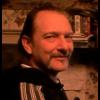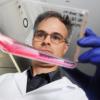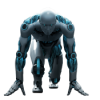I am opening this thread to separate the politics, law, business, and other social related news articles away from the scientific research news. I will begin with this one from the NY Times. Please navigators and advisers feel free to separate off the social aspects from the scientific ones in the over large threads on Stem Cells and put those posts here.
BTW, I don't know if everybody noticed the decision the other day but in what came off as a dead of night vote the UN passed the non-binding resolution to ban all cloning research including therapeutic cloning. I will try and get an article on that later if no one beats me to it.
http://www.nytimes.c...aSj/Q2 Lg5UqIKA
Jamie Rector for The New York Times
Embryonic stem cells at the Reeve-Irvine Research Center are prepared for researchers. The cells can form any other kind of cell in the body.
Moving Stem Cells Front and Center
By ANDREW POLLACK
Published: February 23, 2005
IRVINE, Calif. - Hans S. Keirstead might be the Pied Piper of stem cells - and not just because he makes rats walk. He also helped lure Californians to the polls last fall to approve spending $3 billion of the state's money on embryonic stem cell research over the next decade. But he has critics who worry that he may be leading their new field too far, too soon into uncharted territory.
Dr. Keirstead, an assistant professor at the University of California campus here, has been making paralyzed rats walk again, using a treatment based on human embryonic stem cells. Next year he and his corporate partner, Geron, plan to try treating people who have recent spinal cord injuries, in what would almost certainly be the first human trial of any therapy derived from such cells.
"You've got a patient community out there that is in desperate need," Dr. Keirstead said in an interview. "If the treatment is safe, let's get it out there and try it."
And to those who argue that it is too soon to test his technique on humans, he has an answer. "There will always be people who say slow down, slow down," he said. "I guarantee you none of them have relatives in wheelchairs."
With his gung-ho attitude, the good looks of a surfer and a compelling story to tell, Dr. Keirstead, 37, emerged as one of the leading scientific voices behind the movement that persuaded California voters last November to approve a measure to sidestep federal funding restrictions on stem cell research. His supporters included people with spinal cord injuries, most notably Christopher Reeve, the wheelchair-bound actor who taped a campaign ad citing Dr. Keirstead's research just before he died in October.
But for all of Dr. Keirstead's fans and backers, a number of researchers in California and elsewhere say the scientific validity of his work has not been proved and the technique might not be ready for testing in people. A failure in the first high-profile human test could dash some of the hope spawned by the passage of the California ballot measure.
"A lot of things make rats better," said Jerry Silver, a neuroscientist at Case Western Reserve University, who argued that Dr. Keirstead should test his treatment in dogs or monkeys first. "You can't announce you are going into humans because you've gotten good results in rats."
Mark H. Tuszynski, a professor and director of the center for neural repair at the University of California, San Diego, echoed that view. "I think the jury is still out," he said, "on whether this is a useful approach." Dr. Tuszynski, co-founder of a company trying to use gene therapy to treat neurological diseases, said he would prefer to see "more compelling evidence" from Dr. Keirstead's work before human testing.
The new California stem cell research board that was set up after passage of last fall's ballot measure, Proposition 71, is still organizing itself and figuring out how to begin awarding public grants to scientists. But Dr. Keirstead has been able to speed forward, fueled by money from Geron, a California biotechnology company, which is eager to demonstrate to investors that practical use of stem cells is not a distant dream.
Because embryonic stem cells can form any other kind of cell in the body, scientists envision using them to replace cells and tissues that have been damaged by disease or injury.
The Bush administration has restricted federally funded research to certain colonies of stem cells, pointing out that creating additional such cells involves the destruction of human embryos.
But proponents of the research argue that the early embryos have no feeling or consciousness and that most of them used in research are left over from fertility clinics and are destined to be discarded anyway.
California's ballot measure was propelled by people with diseases and their families and backed by big campaign contributions by some wealthy businessmen.
Robert N. Klein, a Palo Alto real estate developer who has a son with diabetes, helped draft the ballot initiative and put his money behind the vote effort. After passage he was named chairman of the board overseeing distribution of the $3 billion.
Mr. Klein said it was "extremely welcome" that, under Dr. Keirstead, embryonic stem cell therapy was moving toward clinical trials. He said the public needed to know in advance, however, that as with many new therapies, the first trial is not expected to succeed. "It may take several years, or many years, to refine," he said.
Dr. Keirstead's work was a rallying point during the Proposition 71 campaign; he gave 14 speeches to various civic, political and business groups to whom he showed a video of his rat research.
In it, an untreated rat struggled to pull itself along the ground using its forelimbs as its paralyzed hind legs, tail and belly scraped along the ground. A rat treated with Dr. Keirstead's cells was then shown moving its hind legs, though not perfectly, and keeping its tail in the air.
"Stem cells have already cured paralysis in animals," Mr. Reeve, the actor, said in the commercial he filmed, which was broadcast after his death. He urged voters to "stand up for those who can't."
But some spinal cord researchers criticized Dr. Keirstead for having shown his video for three years but not publishing his work with rats in a peer-reviewed journal that would allow experts to truly evaluate it.
Dr. Keirstead said he was in the process of publishing his results with rats, but that he had wanted to do other tests before publishing. He expects to release further results well before starting clinical trials next year. He said, though, that showing the video before publication, even at the risk of annoying fellow scientists, was important to give patients hope.
"I've had people call me up and say, 'I'm about to commit suicide, do you have anything to stop me?' " he said. "People don't realize how close we are."
Indeed, during a two-hour interview in Dr. Keirstead's cramped office here, his phone rang several times with calls from injured people, some volunteering to be guinea pigs in any study he conducts.
John W. McDonald, director of the international spinal cord injury and paralysis center at the Kennedy Krieger Institute in Baltimore, said "to date, not enough has been shown" by Dr. Keirstead and Geron to allow federal regulators to authorize a clinical trial. Even so, he said Dr. Keirstead was being unfairly criticized.
"Scientists aren't too kind to other scientists' receiving too much attention," said Dr. McDonald, who himself received notice for therapy that restored some minor movement and sensation in Mr. Reeve. "I think that's what you're seeing."
Dr. Keirstead's optimism has won him praise from people with spinal cord injuries and their families.
"He cares about patients intensely; it's not just a job for him," said Don C. Reed, a retired schoolteacher and Proposition 71 advocate from Fremont, Calif., whose son, Roman, was paralyzed in a college football accident 10 years ago.
"I held in my hand a rat that had walked again after being paralyzed," Mr. Reed said, "and this with my son sitting there in his wheelchair."
For all their promise, stem cells could pose dangers if not carefully controlled. Scientists do not envision implanting raw stem cells into patients because the cells might turn into undesirable types of tissues. The idea, instead, is to turn embryonic stem cells into the desired type of cell, such as heart cells or liver cells, in the laboratory and then transplant these more specialized cells.
Dr. Keirstead and other scientists in his laboratory figured out how to turn embryonic stem cells into a nearly pure population of brain cells called oligodendrocytes, which form the insulation around neurons. Without this insulation, the neurons cannot easily carry the signals that tell muscles to move or relay sensations to the brain.
They described the work in a paper published by the journal Glia in November. "This is the first report of getting oligodendrocytes in the numbers they did and the purity they did," said Dr. Mahendra Rao, a stem cell researcher at the National Institute on Aging who has also tried to make oligodendrocytes.
But it remains unclear how much of a difference this will make to people with spinal cord injuries. People lose movement and sensation mainly because the nerves themselves - the wires - are cut or damaged. Simply restoring the insulation will not help repair a broken wire.
But Dr. Keirstead said that some neurons remain intact after an injury but lose their insulation, called myelin. So, in theory, restoring the myelin to those neurons could help restore at least some movement or sensation. Such a treatment, he said, would have to be given within days of the injury; otherwise, the formation of scar tissue would probably render the treatment ineffective.
Dr. Keirstead, who was raised in Canada, received his doctorate from the University of British Columbia and won an award for the country's best zoology-related thesis in 1995. He helped start a company in Vancouver, Neuro Therapeutics, to develop spinal cord injury treatments based on that work, which did not involve stem cells. But the company ran out of money. Dr. Keirstead came to Irvine in 2000 to join the Reeve-Irvine Research Center on spinal cord injuries. It was set up by Mr. Reeve and Joan Irvine Smith, a philanthropist and member of the family for whom Irvine is named.
He started his second company, Ability Biomedical, with another University of California, Irvine, faculty member to treat multiple sclerosis. More successful than his first venture, it was sold last summer to Medarex, a publicly traded biotechnology company, for $4.7 million up front and possibly $3.6 million later.
To work with embryonic stem cells, Dr. Keirstead turned to Geron, the Menlo Park, Calif., company that had financed the research leading to the original isolation of human embryonic stem cells at the University of Wisconsin in 1998 and that controls some of the fundamental patent rights in the field.
Thomas B. Okarma, Geron's president, said next year's trial of Dr. Keirstead's approach would mainly check for safety. The oligodendrocytes would be inserted into the spinal columns of patients at the same time they have an operation that is common after spinal cord injury and is aimed at preventing further damage.
Dr. Okarma denied that the trial was premature or risky, but noted that Geron would have to apply to the Food and Drug Administration next year and receive approval before beginning the trial. Asked about the criticism from others, he responded: "There's a lot of jealousy. What can I tell you? This is the hottest thing in medicine."
Geron is providing about $500,000 a year to Dr. Keirstead's lab. As long as that continues, Dr. Keirstead said that he did not need any grants from the Proposition 71 ballot measure he helped pass and that he might not even have the capacity to use the money. "There's only so much I can do," he said.
But then he stopped and thought again, before saying that state money would be welcome. "Research goes as fast as the dollars," he said.















































